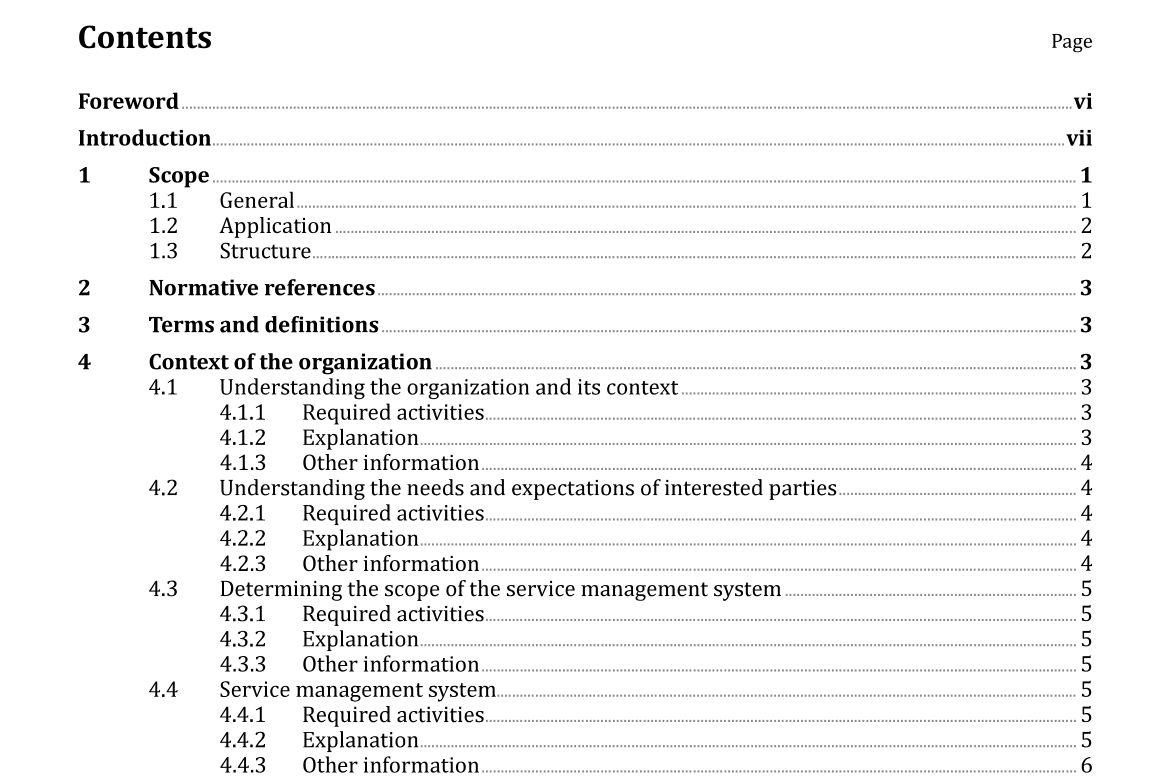ISO IEC 20000-2 pdf download

ISO IEC 20000-2 pdf download.Information technology — Service management
1.2 Application
The guidance in this document is generic and is intended to be applicable to any organization applying an SMS, regardless of the organization’s type or size, or the nature of the services delivered. While it can be used ‘regardless of the organization’s type or size, or the nature of the services delivered, ISO/IEC 20000-1 has its roots in IT. It is intended for service management of services using technology and digital information. The examples given in this document illustrate a variety of uses of ISO/IEC 20000-1. The service provider is accountable for the SMS and therefore cannot ask another party to fulfil the requirements of ISO/IEC 20000-1:2018, Clauses 4 and 5. For example, the organization cannot ask another party to provide the top management and demonstrate top management commitment or to demonstrate the control of parties involved in the service lifecycle. Some activities in ISO/IEC 20000-1:2018, Clauses 4 and 5 can be performed by another party under the management of the organization. For example, an organization can ask another party to create the initial service management plan as a key document for the SMS. The plan, once created and agreed, is the direct responsibility of and is maintained by the organization. In these examples, the organization is using other parties for specific short-term activities. The organization has accountability, authorities, and responsibility for the SMS. The organization can therefore demonstrate evidence of fulfilling all of the requirements of ISO/IEC 20000-1:2018, Clauses 4 and 5. For ISO/IEC 20000-1:2018, Clauses 6 to 10, an organization can show evidence of meeting all of the requirements itself. Alternatively, an organization can show evidence of retaining accountability for the requirements when other parties are involved in meeting the requirements in ISO/IEC 20000-1:2018, Clauses 6 to 10. Control of other parties involved in the service lifecycle can be demonstrated by the organization (see 8.2.3).
4 Context of the organization
4.1 Understanding the organization and its context 4.1.1 Required activities The organization determines external and internal issues relevant to its purpose and affecting its ability to achieve the intended outcomes of the SMS. 4.1.2 Explanation The purpose of this required activity is to set the context by determining those issues that are relevant to the organization’s purpose and influence its ability to achieve the intended outcomes of the SMS. These outcomes include the delivery of value to its customers. Issues can vary, e.g. internal or external, positive or negative. All issues taken together provide the basic context in which the organization establishes its SMS. NOTE The word ‘issue’ in this context can be factors or attributes that have a positive or negative impact. These are important topics, factors, or attributes for the organization in the context of its ability to deliver services of an agreed quality to its customers. To implement an SMS successfully, the organization identifies and documents its internal and external context. Context includes the nature of the organization itself, the needs and expectations of other interested parties that have a stake in the SMS, and the scope of the SMS itself. Based on an understanding of these issues, the SMS can be established. Early in the planning stage, the organization should establish how ISO/IEC 20000-1 is applicable to the organization’s context, so that the initial scope of the SMS can be documented. Failing to identify the context, interested parties, and scope can lead to an unsuccessful or inefficient SMS. Because external and internal issues can change, the organization can review its context at planned intervals and through management review. EXAMPLE Internal issues can include policies, resources, capabilities, people, skills and knowledge, organizational structure, governance, culture, internal customer demands, and finance. External issues can include market, political, economic, and environmental influences, competition, laws and regulations, external customer demands, and the likelihood of events that could affect the services.









